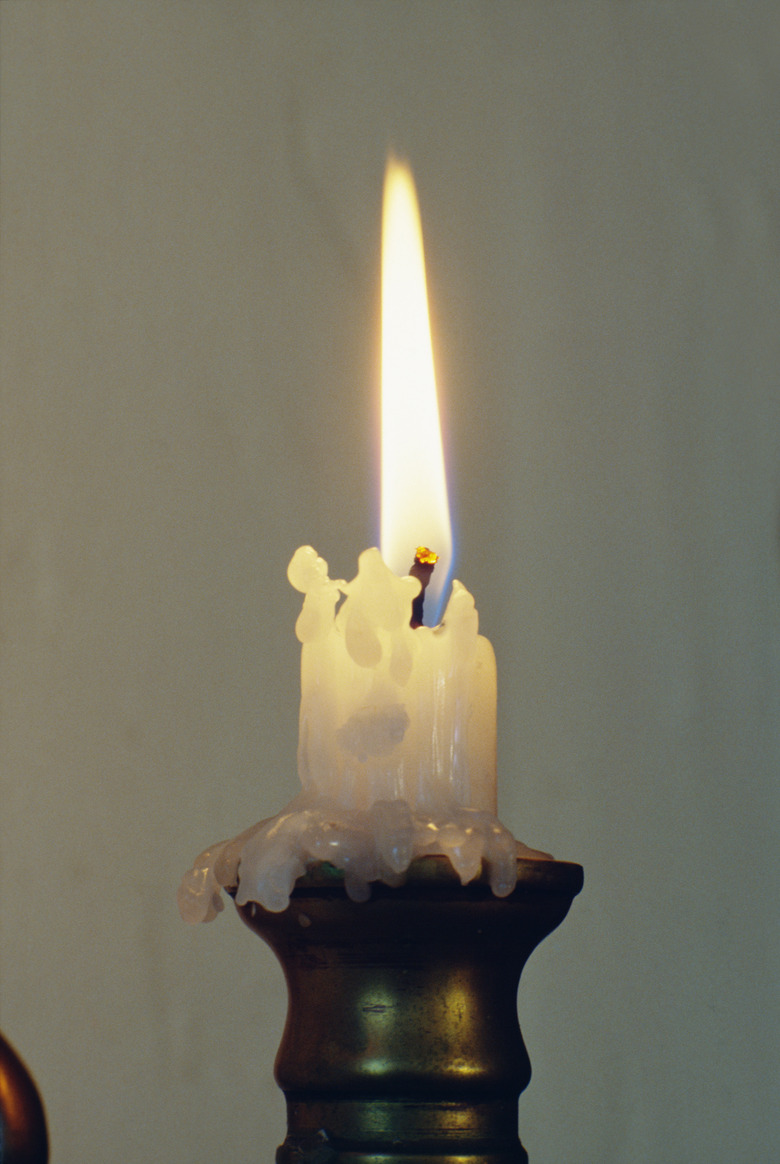How To Find The Molar Heat Of A Combustion Candle
Being able to find the the molar heat of a combustion candle is a necessary skill for passing basic chemistry. It centers around an experiment where a teacher has the student light a candle underneath a pail of water for a set period of time. Using the candle's change in mass, the water's change in temperature and the water's mass, the student must then calculate the change in molar heat. The assumption that founds the basis for this calculation is that the heat released by the candle is equivalent to the heat taken in by the water.
Step 1
Multiply the specific heat of water by the mass of the water in grams and the change in temperature of the water in degrees Celsius to calculate the heat taken in by the water. The specific heat of water is 4.184 joules per gram 1 degree Celsius, so given 1,000 grams of water and a 5 degree change in temperature, multiply 4.184 by 1,000 by 5 to obtain an answer of 20,920 joules.
Step 2
Calculate the number of moles of the candle that were burned by dividing the change in mass by the candle's molar mass. Candle wax is defined by the chemical formula C25H52 and has a molar mass of 353 grams per mole. Given a change in mass of 2 grams, divide 2 by 353 to obtain .0056 moles.
Step 3
Find the molar heat of the combustion candle by multiplying the change in heat by the moles of candle that were burned. Given that the change in water is equivalent to the change in candle heat, the latter is therefore equal to 20,920 joules. Multiply this by .0056 moles to obtain an answer of 117.52 joules / mole.
References
Cite This Article
MLA
Saxena, Vivek. "How To Find The Molar Heat Of A Combustion Candle" sciencing.com, https://www.sciencing.com/molar-heat-combustion-candle-12040726/. 24 April 2017.
APA
Saxena, Vivek. (2017, April 24). How To Find The Molar Heat Of A Combustion Candle. sciencing.com. Retrieved from https://www.sciencing.com/molar-heat-combustion-candle-12040726/
Chicago
Saxena, Vivek. How To Find The Molar Heat Of A Combustion Candle last modified March 24, 2022. https://www.sciencing.com/molar-heat-combustion-candle-12040726/
